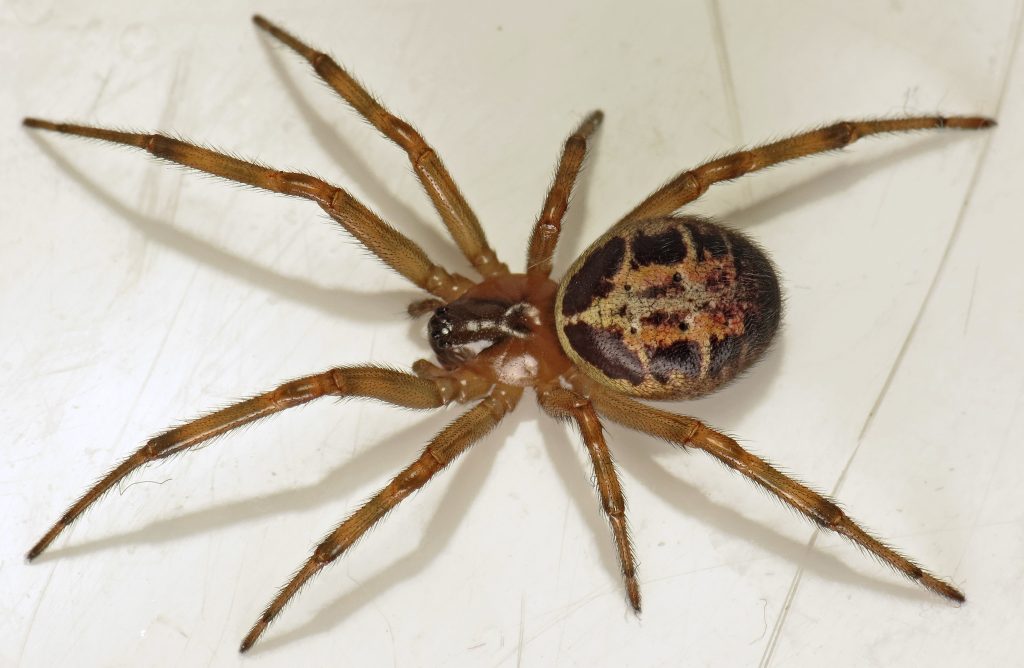
How to Identify a False Widow Spider: Characteristics, Behavior, and Prevention
They are typically deep brown, deep plum, or black. They lack the same distinct hourglass marking that many black widows have, though false widows often have white, beige, or red spots. Behavior: While some species have medically-significant bites, most false widow bites produce very mild symptoms in humans.
The false widow spiders (Steatoda spp.) form a group of species that, because of their general resemblance to the much more notorious black widow spiders (Latrodectus spp.), can cause concern when found in the UK.
Although they resemble black widow spiders, they are not as harmful. All these spiders are likely to do is give you a small and relatively harmless bite. (See our article How dangerous are false widow spiders?)
Size and appearance
Female 8.5-14 mm Male: 7-10 mm
Always larger than S. bipunctata and usually larger than S. grossa. Their abdomen pattern is often described as ‘skull-shaped’ but is more like a pentagon – it is clearer in males and dimmer or sometimes absent in females. Their legs are uniformly red to brown.
Distribution and habitat
Introduced with bananas from the Canary Islands and Madeira, they are now well established in the southern counties and spreading north. They are found in and around houses and other buildings. They prefer elevated positions such as the top corners of rooms and conservatories, from where they hunt flying insects.
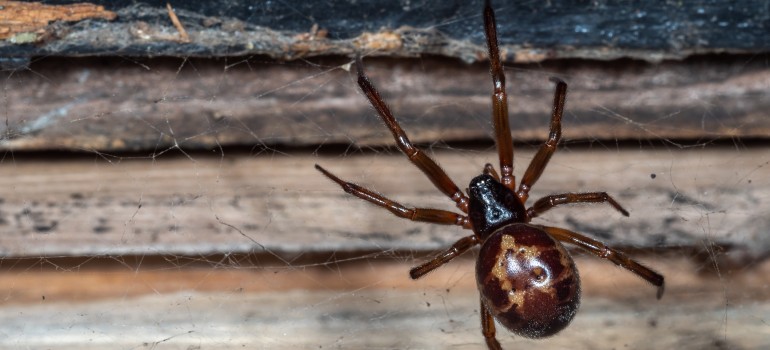
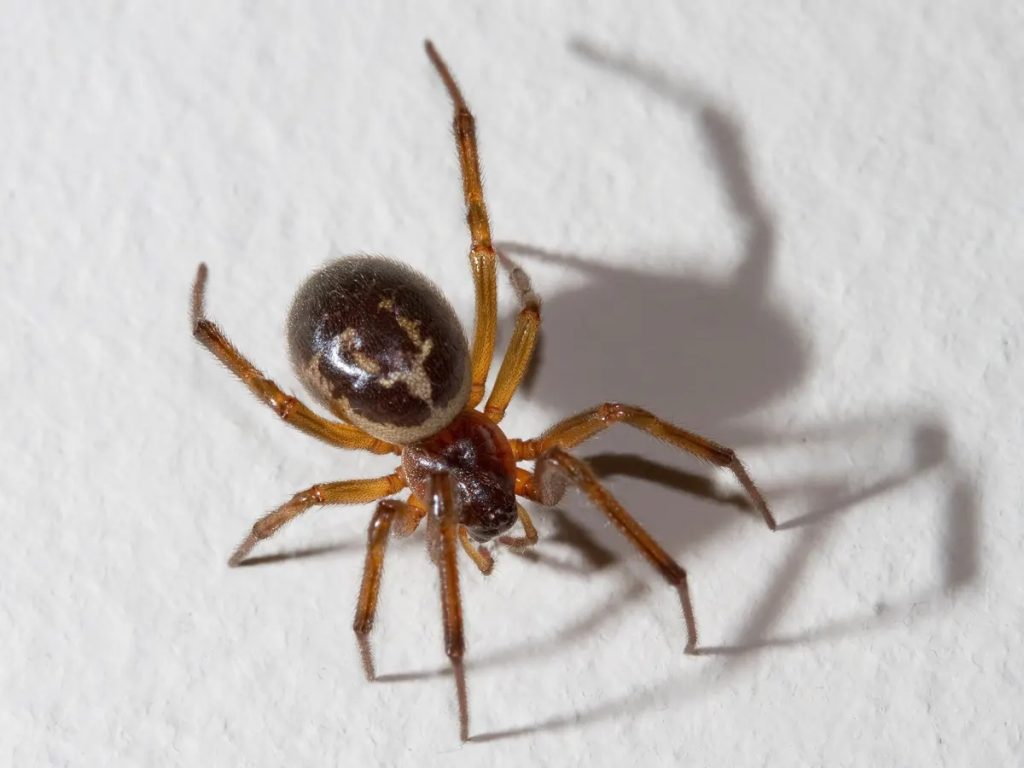
Habitat and range
In common with other members of the Theridiidae family, S. nobilis constructs a cobweb, i.e., an irregular tangle of sticky silken fibers. As with other web-weavers, these spiders have very poor eyesight and depend mostly on vibrations reaching them through their webs to orient themselves to prey or warn them of larger animals that could injure or kill them.
Distribution
The spider is found in the Canary Islands, in England around Hampshire, Isle of Wight, Devon and Cornwall, Dorset and Essex , and in Madeira; it has also been observed in parts of continental Europe, Africa and USA.
Population growth in UK
As with many animals extending their range from the continent, the distribution of S. nobilis is expected to increase northwards in the UK, due at least partly to climate change. The False Widow spider first arrived in banana shipments from the Canary Islands in around 1870.
This prediction was reported by Stuart Hine of the Natural History Museum. The spider and alarming stories about it regularly feature in newspaper articles. Hine responded on the naturenet blog, stating, “Of course I also explain the great value of spiders and how rare the event of spider bite in the UK actually is. I also always explain that up to 12 people die from wasp/bee stings in the UK each year and we do not panic so much about wasps and bees – but this never makes it past editing.”
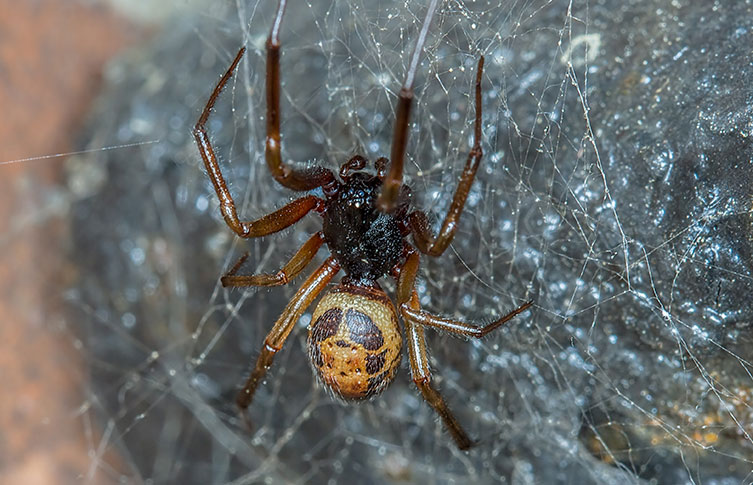
Medical significance
They are not aggressive, and most injuries to humans are due to defensive bites delivered when a spider gets unintentionally squeezed or pinched somehow. It is possible that some bites may result when a spider mistakes a finger thrust into its web for its normal prey, but ordinarily intrusion by any large creature will cause these spiders to flee.
The bite of S. nobilis is known to be medically significant in humans, however without any long-lasting effects. The bite of this spider, along with others in the genus Steatoda, can produce a set of symptoms known as steatodism. Symptoms of bites include intense pain radiating from the bite site, along with feverishness or general malaise.
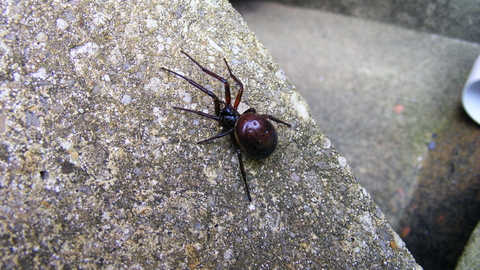
In 2006 a Dorchester man spent three days in Dorchester County Hospital with symptoms of heart seizure, after suffering a spider bite believed to be caused by S. nobilis. (A spider was observed in the act of biting the man; however it was not captured and positively identified by an expert).The bite of S. nobilis, like other Steatoda spiders is far less dangerous to humans than that of true black widows.
Behavioral Traits: Understanding the Habits and Preferences of False Widow Spiders
Black widow spiders, despite their venom, are typically non-aggressive. These spiders will only bite if provoked, commonly when they’re pinched, squeezed, or pressed. Most bites happen when a human accidentally brushes a hand against a black widow, typically when reaching to grab an item, or cleaning out a dark space.
Both males and females have dark brown legs and a gray abdomen with light markings on the top of the body. These spiders can bite if disturbed, but are not aggressive. They usually try to escape rather than bite.
Preventive Measures: Tips on Avoiding Encounters with False Widow Spiders
Be sure to vacuum carpets and floors regularly, dust surfaces, and remove any clutter that can provide hiding spots for spiders. Black widow spiders can enter your home through small cracks and gaps. Therefore, it’s crucial to seal any entry points to keep them out.
Insecticides containing pyrethroids, like bifenthrin, cyfluthrin, permethrin, and tetramethrin, are the most effective against false widow spiders. Spray the insecticides around your home’s foundation and windows outside before temperatures get cold outside.
Stay Informed and Prepared When Dealing with Potential False Widow Spider Encounters
The key differences between a false widow and a black widow spider are size and colour. Black widows are far larger and black, while their lookalikes are brown and smaller.
False widow spiders are not aggressive towards humans. Their venom is generally not dangerous and doesn’t require special treatment unless you have an allergic reaction.
Keep your home spider-free by regularly vacuuming cobwebs. Keep an insecticidal spray close by to prevent spiders from entering your home and taking up residence.
Thousands of eggs are laid by a single spider, so if you see a significant increase in baby spiders in your home or yard, it may be time to call a professional pest control company.
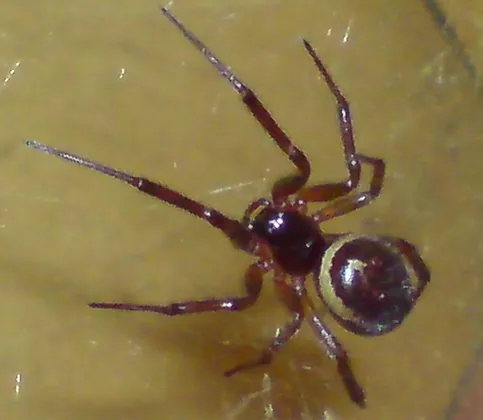
How to Get Rid Of False Widow Spiders
If you want to get rid of the spiders in the house, you need to clean it thoroughly. Remove the webs and any dead spiders, as well as eggs and young ones. You can do this by using a vacuum or other device that will suck up the webs. You can also use insecticidal sprays to control the spiders and their prey.
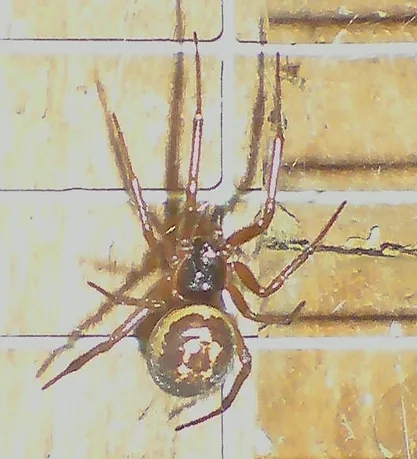
Normally, this is sufficient to deter false widows. Some additional precautions, such as sealing off potential harbouring spots in garages and basements, may further reduce the chance of contact with spiders. Usually, they get inside via the cracks and crevices of buildings, and the best way to prevent this is to block the possible entry points.
If you’re experiencing problems with spiders and can’t deal with them on your own, there are professional spider control companies that specialise in spider removal that can help you out.
